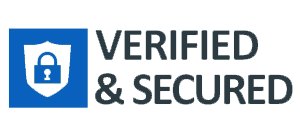When people need money for lines of credit it’s often the last thing that occurs to them. What comes to mind first is generally how I go to my bank and what I have to do to get a traditional fixed- or variable-rate loan, when I have to give up my house for security. I can use credit cards, and I can borrow from friends or family, but that’s a headache. There is the option of going to peer-to-peer lending or social lending donation sites on the web, but at the end who wants to go to a pawn shop to get money for your business?
The key thing is that banks have been giving credit lines for years to meet the working capital needs of businesses to help with strategic investment opportunities. Banks do not advertise “Come to our bank for credit lines” due to the fact that banks often don’t advertise to potential borrowers who don’t think to ask. The only credit line borrowing that might come up is a home equity line. But that is a loan secured by your home.
What Is a Line of Credit?
A line of credit is a flexible loan from a bank or financial institution. The credit line is like a credit card where you have limited access or a credit limit you can borrow to and then pay back. Similar to a credit card that can be paid back monthly or in multiple payments. When accessing funds on a credit line it’s just like a loan. You are charged a fee or interest until you pay it back. The stronger your relationship with your bank the better it is.
Typically, the interest rate is generally variable, which makes it difficult to predict what the money you borrow will end up costing you. If possible, it may be better to seek a credit line outside of a bank through an investor or Blue Vine or Kabbage.
Lines of credit tend to be lower-risk revenue sources relative to credit card loans. Bank’s earning asset management somewhat, as the outstanding balances can’t really be controlled once the line of credit has been approved. Banks are not terribly interested in underwriting one-time personal loans, particularly unsecured loans, for most customers. Banks stray from these types of loans now because of the risk. It’s not smart for a person to take out a loan every month or two, repay it, and then borrow again. Lines of credit provide an answer to both of these issues by making a specified amount of money available if and when the borrower needs it.
Lines of credit are like any money product—neither good nor bad. It’s all in how businesses use them. On one hand, excessive borrowing will not result in a line of credit. On the other hand, lines of credit can be cost-effective solutions in solving immediate problems like payroll or getting new equipment. What is always good to know is to pay careful attention to terms and what you can accomplish and put you in a position to be successful.




